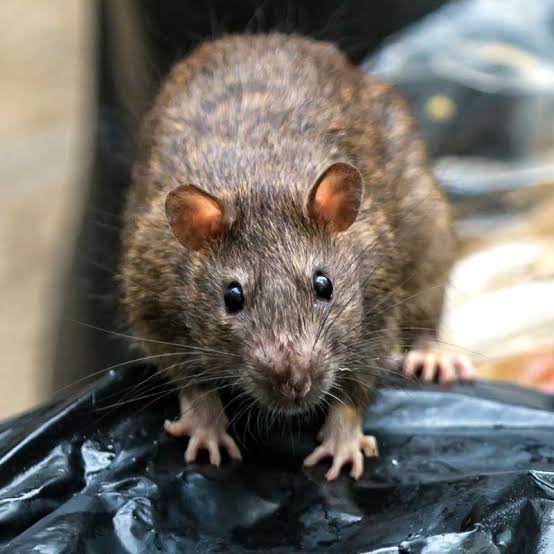Digital marketing is the world where art meets strategy, and the brand meets the audience in ways unparalleled. In today’s digitally-first era, one’s online presence is not only essential but also vital. Try this for size: When did you last buy or try anything without quickly browsing Google or rolling through Instagram? Exactly!
Digital marketing is both art and science-essentially the process of meeting your customers where they already are online. It involves much more than running an advertisement or posting on social media; this is how one creates connections, delivers value, and outpaces the pack. Digital marketing from a Web Development Company UK includes PPC campaigns, collaborations with social media influencers, and whatnot.
Having said that, digital marketing doesn’t have to be that much of a deal as it is being made. This guide is your friendly companion, breaking strategies down into little relatable tips. Whether you’re a new player entering the digital space or looking to sharpen your already running wheel with Digital Marketing Services USA, we’ve got your back.
By the end of this guide, you will not only learn the top strategies of digital marketing but also how it can totally revolutionize your business. So draw yourselves a cup of coffee and let’s plunge into this path of digital success!
What Is Digital Marketing?
Digital marketing encompasses the promotion, selling, or advertising of one’s products or services using internet platforms and electronic tools.
Thus, it performs better than other conventional ways because it uses the potential of the Internet to reach targeted audiences that are usually acquired through social networking sites, search engines, websites, and email.
Unlike old-school methods, digital marketing allows businesses to connect directly with their target audience, creating personal experiences that resonate.
Whether it is an eye-catching ad on Instagram, a resourceful blog, or an efficient e-mail campaign for targeted viewership, digital marketing is all about connecting with, engaging, and converting your prospects into avid followers in the digital space.
How Digital Marketing Works
Digital marketing is a strategy combined with technology and creativity to engage your audience and drive business outcomes.
It all begins by getting to know the audience-who, what, and where they hang out online-and sharing appropriate content with them through social media, search engines, and email for their attention.
But that is not all: with analytics tools, you will see in clear detail how your audience is interacting with your campaigns, thereby affording you the opportunity to fine-tune your approach in real-time. It is actually a creation, analysis, and improvement cycle for keeping your efforts effective and your audience engaged.
Importance of Digital Marketing
Digital marketing is here to stay, not some flash in the pan. While more users are turning toward online platforms for every kind of purchase or entertainment, businesses too need to get there.
From cost-effectiveness and precision targeting to measuring ROI, the unmatched advantages it offers are great. Unlike traditional ways, on the digital platform, you get to know real insight into the performance of campaigns with which you can adapt with speed and effectiveness to maximize your ROI.
Thirdly, more personalized customer relationship building is a plus point here. Whether it is a small business or a global brand, digital marketing would equalize the playing field to keep it competitive and relevant in the changing market.
Types of Digital Marketing Strategies
Pay-Per-Click Advertising
Whether it is on search engines, PPC promotes ads that top search results for guaranteed, immediate traffic to a site.
You pay every time anyone clicks through; you get quick visibility while reaching an extremely targeted audience more economically.
Social Media Marketing
Engage with your audience on Instagram, Facebook, and LinkedIn. Using social media marketing lets one create brand awareness, develop relations, and promote the product directly to millions of users.
Influencer Marketing
Partner with relevant influencers to extend your reach. Their recommendations build trust and encourage their followers to engage with your business.
Content Marketing
Inform and assist your audience with content that provides value. This could be blogs, infographics, eBooks, etc.
This way, content marketing helps your brand grow makes it an industry leader, and builds long-term relationships.
Search Engine Optimization
SEO boosts your website’s visibility by ranking higher in SERPs. It focuses on optimizing your content with keywords and technical elements to drive organic traffic.
Website Marketing
Your website is your digital storefront. Optimize it with a user-friendly design, appealing content, and calls to action for lasting impressions.
Email Marketing
Email marketing speaks directly to your audience by way of newsletters, offers, and personalized messages. It is also perfect for lead nurturing and repeat business.
Affiliate Marketing
In affiliate marketing, reward the partners for publicizing your products or services. It is a performance-based strategy that uses other influencers or websites to enhance your sales.
Video Marketing
Videos can fascinate audiences and convey the right message across. Be it an explainer video or a product demo, this strategy will keep users glued and result in conversions.
Mobile Marketing
Mobile marketing targets users on their smartphones through SMS, apps, or mobile-optimized websites, ensuring your business stays in their pocket—literally!
Native Advertising
Native ads blend in with the user experience and appear as non-interruptive content. They are more engaging because they look and sound just like the platform.
Advantages of Digital Marketing
A Wider Geographic Reach
Expand beyond local boundaries and connect with audiences worldwide. Digital marketing enables you to target specific regions, cities, or even global markets effortlessly.
Cost Efficiency
Reach more people for less money compared to traditional advertising. Digital campaigns can fit any budget, ensuring maximum ROI.
Quantifiable Results
Follow the success of your campaigns with analytics. Understand what is working and make data-driven decisions for better outcomes.
Easier Personalization
Tailor your campaigns to individual preferences using customer data. Personalized messages increase engagement and strengthen relationships.
More Connection With Customers
Interact directly with your audience through comments, messages, and personalized content, fostering trust and loyalty.
Easy and Convenient Conversions
Clear friction and confusion points from the buying process by clearly delineating calls to action and optimizing the online experiences for customers so that they better enable conversion.
How to Create a Digital Marketing Strategy in 5 Steps
A digital marketing strategy should be made not only through a very specific planning phase but also by an execution phase in which successful achievement of goals is accomplished.
Outline each and everything clearly that you want to achieve, whether it be an increase in brand awareness, leads, or sales. The next thing is the ideal target audience-who they are, what they are up to, and how they waste their time online.
Set a reasonable budget where the cost and effects are balanced correctly. Choose a proper marketing strategy that best fits your audience and goals; it might be SEO, social media, or email marketing.
Monitor efforts and refine them using analytics for continuous improvement. This structured approach ensures your strategy stays focused, adaptable, and results-driven.
Set Clear and Smart Goals
Set SMART goals that are specific, measurable, attainable, relevant, and time-bound. Setting SMART goals gives you a clear vision and focus on where you are and the milestones achieved.
Identify Your Target Audience
Knowing your audience is crucial. Define their age, interests, habits, and online preferences to create tailored campaigns that truly resonate.
Create a Budget
A well-defined budget ensures you allocate resources wisely. Balance spending across different strategies while staying within your financial limits.
Choose Your Digital Marketing Strategy
Pick strategies that best suit your business and audience. From social media to SEO, align your approach with your goals for maximum impact.
Refine Your Marketing Efforts
Analyze performance data regularly to identify what’s working and what isn’t. Adjust your strategies to optimize results and stay ahead.
Why Choose Tekrevol’s Digital Marketing Services to Grow Your Business?
Tekrevol leads the game in digital marketing, fusing innovation, strategy, and results-oriented approaches. Backed by industry experts, we develop tailored solutions that precisely meet your unique business needs.
Be it creating compelling content, optimizing your website for search engines, or launching high-conversion campaigns, the focus is on reaching your goals. With our clear reporting and committed excellence, your campaign is always just a glance ahead of pace.
Partner with Tekrevol to use fresh tools, proven strategies, and personalized attention driven toward growth-boosting prominence and delivering measurable success onto your business’ bottom line.
Closing It
Digital marketing is not optional but is the base of every successful business. Be it a rising or a veteran, these strategies will grow your brand by way of better audience engagement and long-term growth.
This guide has walked you through the essentials: designing the strategy, and understanding the goodness of digital marketing.
If you want to take your business to the next level, you can consider Tekrevol for professional expertise as they stand for innovation, transparency, and a results-driven approach. They can turn your marketing efforts into success stories.
















